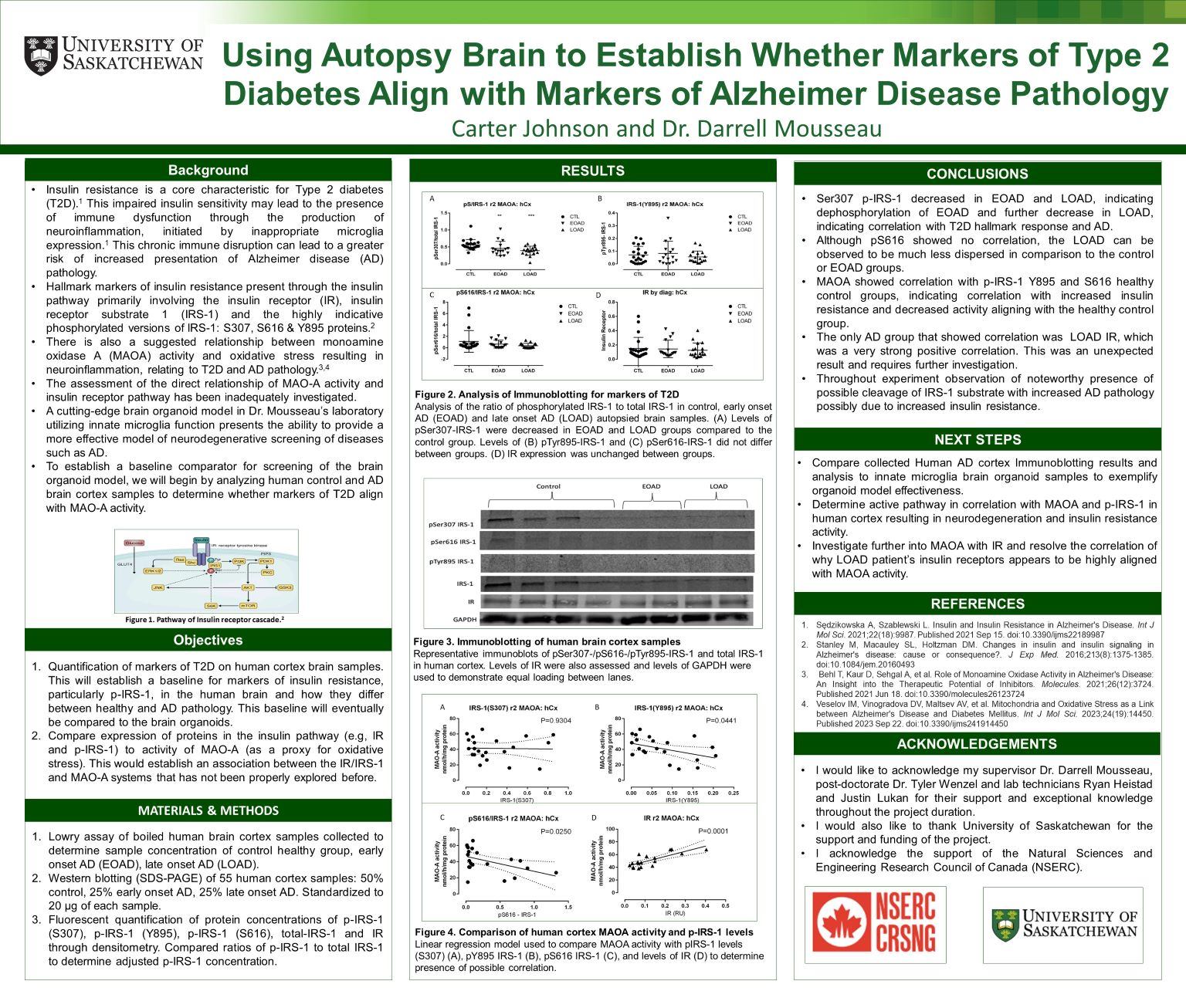
Using Autopsy Brain to Establish Whether Markers of Type 2 Diabetes Align with Markers of Alzheimer Disease Pathology
Carter Johnson
Insulin resistance, a hallmark of Type 2 diabetes (T2D), has been linked to Alzheimer’s disease (AD) through immune dysfunction resulting in neuroinflammation. This study investigates the correlation between insulin resistance markers and AD pathology in human brain cortex samples to develop a baseline comparator for screening of a cutting-edge brain organoid neurodegenerative model involving innate host microglia in Dr. Mousseau’s laboratory. This aims to provide a more effective model of neurodegenerative disease screening. Along with the model of interest, the relationship between monoamine oxidase A (MAO-A) activity and the insulin receptor pathway was assessed, exploring its direct relationship with insulin resistance and AD pathology. Fifty-five cortex samples from control, early-onset AD (EOAD), and late-onset AD (LOAD) groups were analyzed for phosphorylated insulin receptor substrate-1 (p-IRS-1: Ser307, Ser616, Tyr895), total IRS-1, and insulin receptor (IR) using western blotting and fluorescent densitometry. A decrease in pSer307-IRS-1 was observed in EOAD and LOAD, suggesting a link with T2D and AD. An unexpected strong correlation between IR and AD pathology was identified with MAO-A, while MAO-A activity also aligned with p-IRS-1 in healthy controls but not in AD patients. The results collected provide a strong foundation to further examine the brain organoid model effectiveness.
